🌿 Complete Guide to Low-Maintenance Landscaping: Design, Plants & Care for Busy Homeowners
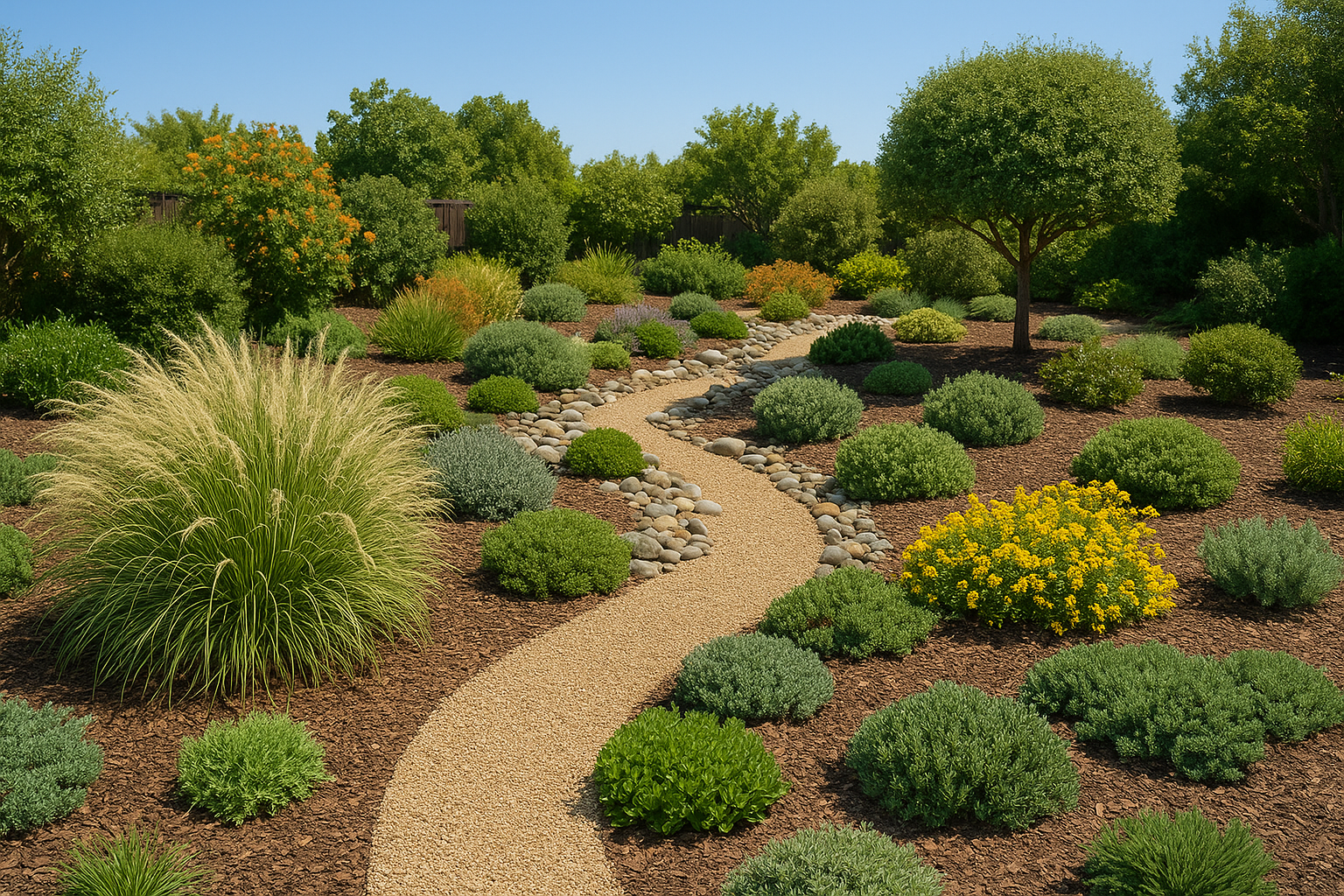
Are you tired of spending your precious weekends mowing, weeding, and pruning instead of actually enjoying your outdoor space? You’re not alone. The average American homeowner spends over 70 hours per year on yard maintenance—that’s nearly three full days of your life annually devoted to lawn care alone! It’s no wonder that low maintenance landscaping ideas are becoming increasingly popular among busy professionals, retirees, and anyone who values their free time.
Creating a beautiful yard doesn’t have to mean signing up for endless maintenance. The secret lies in smart design choices, appropriate plant selection, and efficient systems that work with nature rather than against it. Low-effort garden design isn’t about neglecting your outdoor space—it’s about creating a thoughtful landscape that thrives with minimal intervention.
Whether you’re planning a complete yard overhaul or simply looking for ways to reduce the time you spend on maintenance, this guide will provide you with practical solutions, expert advice, and inspiration for creating a beautiful outdoor space that doesn’t demand constant attention.
What You’ll Learn in This Guide to Easy Yard Ideas 📋
This comprehensive resource will walk you through everything you need to know to create a stunning, low-effort landscape:
- 🏡 Smart design principles that minimize maintenance from day one
- 🌱 Plant selection strategies for low-care, high-impact vegetation
- 💧 Water-wise techniques that save time, money, and resources
- 🛠️ Hardscaping solutions that reduce maintenance zones
- 🌿 Regional recommendations tailored to different U.S. climate zones
- 🔄 Seasonal care calendar with minimal-effort maintenance schedules
- 💰 Budget-friendly transformations for both small and large yards
- ⏱️ Time-saving tools and technology worth investing in
🕒 Why Low-Maintenance Landscaping Is Worth It
The shift toward low maintenance landscaping ideas isn’t just a trend—it’s a practical response to our changing lifestyles and environmental realities. According to a 2022 survey by the National Association of Landscape Professionals, 67% of homeowners now prioritize reduced maintenance requirements when redesigning their yards, compared to just 42% a decade ago.
This movement toward easier yard care is driven by several compelling factors:
First, there’s the time factor. The U.S. Bureau of Labor Statistics reports that Americans spend an average of 5.8 hours per week on home maintenance activities, with yard work accounting for a significant portion. By implementing low-effort garden design principles, homeowners typically reduce their outdoor maintenance time by 60-80%.
Environmental consciousness also plays a major role. Traditional lawns require significant inputs—from fertilizers and herbicides to fossil fuel-powered equipment. A study by the University of California found that gas-powered lawn mowers produce 11 times the air pollution of a new car for each hour of operation. Low-maintenance landscapes dramatically reduce this environmental impact.
“People often think that ‘low-maintenance’ means ‘low-beauty,’ but that’s a misconception,” explains Susan Martinez, ASLA, a landscape architect specializing in sustainable design in Colorado. “When properly planned, a low-maintenance yard can actually be more visually interesting and ecologically diverse than a traditional lawn-centered landscape. The key is thoughtful design that works with your specific site conditions.”
Perhaps most importantly, low-maintenance landscaping allows you to actually enjoy your outdoor space rather than just work on it. When homeowners transition to easier-care yards, they report spending 3-4 times more hours actively using their outdoor spaces for relaxation and entertainment.
🏡 Core Design Principles for Easy-Care Landscapes
Creating a truly low-maintenance yard begins with smart design decisions. These foundational principles will help you develop a landscape that naturally requires less care while still looking beautiful throughout the seasons.
1. Embrace the “Right Plant, Right Place” Philosophy
The single most important factor in reducing landscape maintenance is matching plants to your specific conditions. Plants that are suited to your soil type, light exposure, and climate will thrive with minimal intervention. According to research from the Lady Bird Johnson Wildflower Center, native and adapted plants require up to 80% less maintenance and resources once established compared to non-native alternatives.
Start by identifying your USDA hardiness zone (available on the USDA website) and understanding your soil type. Testing your soil (available through local extension offices) provides valuable information about pH and nutrient levels that will guide your plant choices.
2. Reduce Lawn Areas Strategically
Traditional turf grass is typically the most maintenance-intensive element in any landscape, requiring regular mowing, fertilizing, weeding, and watering. The National Wildlife Federation notes that Americans collectively spend approximately 40 billion dollars annually on lawn care.
Consider these approaches to minimize lawn areas:
- Replace peripheral lawn sections with mulched planting beds
- Create defined “garden rooms” separated by hardscaping
- Install a smaller “focal lawn” surrounded by lower-maintenance alternatives
- Use groundcovers in areas that are difficult to mow or rarely used
- Consider meadow-style plantings with native grasses for larger properties
3. Group Plants with Similar Needs (Hydrozoning)
Arrange your garden into zones based on water and care requirements. This “hydrozoning” approach ensures that high-maintenance plants are grouped in easily accessible areas, while lower-maintenance options occupy the majority of your landscape. According to irrigation specialists, proper hydrozoning can reduce water use by up to 30%.
4. Plan for Mature Plant Sizes
One of the most common landscaping mistakes is placing plants too close together, which leads to overcrowding, increased disease pressure, and the need for frequent pruning. Research each plant’s mature size and space accordingly, even if it means your landscape looks a bit sparse initially.
Pro Tip: When designing planting beds, position plants so they’ll touch but not crowd each other at maturity. This creates a low-maintenance landscape that naturally suppresses weeds by shading the soil, yet doesn’t require regular pruning to maintain appropriate spacing. As landscape architect Michael Gilkey notes, “The most sustainable pruning is the pruning you never have to do.”
5. Incorporate Natural Barriers and Borders
Clearly defined edges between different landscape elements reduce maintenance by preventing unwanted plant spread. Consider these options:
- Stone or metal edging between beds and lawn areas
- Pathways that double as maintenance breaks
- Raised beds that contain spreading plants
- Root barriers around potentially invasive species
- Natural transitions using changes in elevation or material
By applying these core design principles, you’ll create a framework for a landscape that inherently requires less maintenance. The initial planning may take more time, but the long-term benefits—both in reduced workload and enhanced enjoyment of your outdoor space—are immeasurable.
🌱 Top Low-Maintenance Plants by Region
Selecting the right plants is perhaps the most critical factor in creating a truly low-effort garden. The ideal low-maintenance plants share several key characteristics: drought tolerance once established, resistance to common pests and diseases, appropriate growth rate (not too fast or slow), and minimal pruning requirements.
According to the University of California Cooperative Extension, replacing high-maintenance plants with low-maintenance alternatives can reduce garden care time by up to 70%. However, what thrives effortlessly in one region may struggle in another, so regional adaptation is essential.
Low-Maintenance Plant Selection by U.S. Region
| Region | Shrubs | Perennials | Groundcovers | Native Grasses |
|---|---|---|---|---|
| Northeast | Aronia (Chokeberry), Itea (Sweetspire) | Echinacea, Rudbeckia, Heuchera | Waldsteinia, Pachysandra | Little Bluestem, Prairie Dropseed |
| Southeast | Abelia, Yaupon Holly | Salvia, Gaura, Coreopsis | Asiatic Jasmine, Mondo Grass | Muhly Grass, Switchgrass |
| Midwest | Ninebark, Arrowwood Viburnum | Baptisia, Amsonia, Russian Sage | Fragaria (Wild Strawberry), Carex | Sideoats Grama, Prairie Dropseed |
| Southwest | Texas Sage, Desert Spoon | Agave, Yucca, Penstemon | Dalea, Creeping Germander | Blue Grama, Deer Grass |
| Northwest | Oregon Grape, Pacific Wax Myrtle | Helianthemum, Lavender, Heuchera | Kinnikinnick, Ornamental Strawberry | Fescue, Tufted Hairgrass |
Research from the Lady Bird Johnson Wildflower Center shows that native plants require up to 80% less water and maintenance than non-natives once established. Landscape architect Barbara Stelle explains, “Native plants have evolved with local conditions and wildlife. They’re naturally adapted to thrive with minimal intervention, unlike many exotic ornamentals that often need special care to perform well.”
Key Characteristics to Look for in Low-Maintenance Plants:
- Drought tolerance: Plants that require minimal supplemental watering once established
- Disease and pest resistance: Varieties bred or naturally selected to withstand common problems
- Appropriate growth habit: Plants that maintain their form without frequent pruning
- Multi-season interest: Plants that provide visual appeal during multiple seasons
- Climate adaptation: Species suited to your regional temperature extremes
Low-Maintenance Trees Worth Considering:
For larger landscapes, tree selection is particularly important, as mistakes can be costly and long-lasting. Consider these widely-adapted, low-maintenance tree options:
- Eastern Redbud (Cercis canadensis): Native to eastern U.S., spring flowers, interesting seed pods
- Serviceberry (Amelanchier spp.): Four-season interest, edible berries, beautiful fall color
- Crape Myrtle (Lagerstroemia): Long-blooming, drought-tolerant when established (southern regions)
- Ginkgo (Ginkgo biloba): Pest-free, beautiful fall color, pollution tolerant (male varieties only)
- Turkish Filbert (Corylus colurna): Drought-resistant once established, interesting bark texture
Remember that all plants, even low-maintenance selections, require regular care during their establishment period (typically 1-3 years). Providing appropriate water and attention during this critical phase will ensure your plants develop the deep, extensive root systems necessary for long-term low-maintenance performance.
🛠️ Hardscaping Elements That Reduce Maintenance
While plant selection is crucial for low-maintenance landscapes, thoughtful hardscaping—the non-living elements in your yard—can dramatically reduce the time and effort required for upkeep. According to landscape infrastructure studies, incorporating appropriate hardscaping can reduce overall landscape maintenance time by 30-50%.
Strategic Hardscape Features for Low-Effort Garden Design
Pathways and Walkways
Properly designed paths serve multiple functions in a low-maintenance landscape. They provide clear navigation through the space, reduce the amount of plantable area requiring maintenance, and create natural divisions between different garden zones. Materials like decomposed granite, flagstone, or permeable pavers allow water infiltration while minimizing weed growth.
Patios and Seating Areas
Extended outdoor living spaces not only increase your usable square footage but also replace high-maintenance lawn areas. A 2023 National Association of Realtors study found that homeowners recoup approximately 80% of their investment in well-designed patios, making them both practical and financially sound choices.
Retaining Walls and Terraces
Sloped yards present unique maintenance challenges, from erosion to difficult mowing. Terracing with retaining walls creates level planting areas that are easier to maintain while solving drainage issues. Modern materials like modular block systems have made DIY installation more accessible for homeowners with basic skills.
Mulched Beds with Defined Edges
Perhaps the simplest hardscaping element, well-defined bed edges with quality mulch dramatically reduce weeding time. Research from the University of California shows that a 3-inch layer of organic mulch can reduce weed growth by up to 90% while conserving soil moisture.
Comparative Analysis of Hardscaping Materials
| Material | Initial Cost | Longevity | Maintenance Required | Best Applications |
|---|---|---|---|---|
| Concrete | Medium | 20+ years | Very Low (occasional power washing) | Driveways, patios, walkways |
| Natural Stone | High | Lifetime | Low (occasional resealing for some types) | Feature areas, paths, patios |
| Gravel/DG | Low | 5-10 years before refreshing | Medium (annual raking, weed control) | Paths, transitional areas |
| Wooden Decking | Medium | 10-20 years (material dependent) | Medium-High (regular sealing/staining) | Elevated areas, transition from house |
| Composite Decking | High | 25+ years | Very Low (occasional cleaning) | Replacement for wood decking |
| Pavers | Medium-High | 25+ years | Low (occasional joint sand refreshing) | Patios, walkways, driveways |
Rick Martinez, owner of Martinez Landscaping in Arizona, shares from his 25 years of experience: “I’ve transformed hundreds of high-maintenance yards into low-care landscapes, and proper hardscaping is always the backbone of success. The key is finding the right balance—typically about 30-40% hardscape to 60-70% softscape for most residential properties. This ratio provides enough structure to reduce maintenance while keeping the landscape feeling natural and inviting.”
When planning hardscape elements, consider multi-functional designs:
- Seating walls that eliminate the need for additional furniture
- Raised planters that reduce bending and create clear planting boundaries
- Water features that double as focal points and wildlife habitat
- Pergolas and shade structures that support vining plants while defining spaces
The most successful low-maintenance yards integrate hardscaping that complements the architectural style of the home and reflects the regional landscape character, creating a cohesive design that feels intentional rather than utilitarian.
💧 Water-Wise Systems and Solutions for Effortless Irrigation
Efficient watering is the cornerstone of truly low-maintenance landscaping. According to the Environmental Protection Agency, outdoor water use accounts for 30-60% of residential water consumption, with much of this water being wasted through inefficient practices. Implementing smart irrigation not only saves time but also significantly reduces water bills.
🚿 Smart Irrigation Systems Worth the Investment
- Drip Irrigation: This method delivers water directly to plant roots, reducing evaporation and weed growth. Studies show drip systems use 20-50% less water than conventional sprinklers while promoting healthier plant growth.
- Smart Controllers: Modern irrigation controllers use weather data, soil moisture sensors, or both to automatically adjust watering schedules. The Irrigation Association reports that smart controllers can reduce water usage by 15-30% compared to traditional timers.
- Rainwater Harvesting: Systems range from simple rain barrels to complex cisterns. A 1,000 square foot roof can collect approximately 600 gallons of water from just 1 inch of rainfall.
- Zoned Irrigation: Grouping plants with similar water needs and creating separate irrigation zones prevents overwatering and allows customized schedules for different areas.
Water-Wise Warning: Never mix different types of irrigation emitters on the same zone (such as drip and spray heads). Their different flow rates make it impossible to water efficiently, leading to either overwatering or underwatering parts of your landscape. If you’re retrofitting an existing system, convert entire zones at once.
💦 Implementation Strategy for Water-Wise Landscaping
For ensuring sustainable water conservation while minimizing maintenance time, follow this approach:
Step 1: Analyze Your Site’s Water Patterns
Before installing any system, observe natural drainage patterns during rainfall. Note where water collects and where it runs off quickly. These observations will inform both your planting and irrigation design.
2 ºGroup Plants by Water Needs (Hydrozoning)
Create distinct landscape zones based on water requirements:
- High water zone: Small, accessible areas near the house
- Moderate water zone: Transitional areas with adaptable plants
- Low water zone: Outlying areas with drought-tolerant natives
Step 3: Select the Right System for Each Zone
- High water zones: Precision drip irrigation
- Moderate zones: Sub-surface soaker hoses or low-flow rotary sprinklers
- Low water zones: Establishment irrigation only, then rainfall-dependent
Step 4: Incorporate Smart Technology
Even simple moisture sensors can reduce water use by 15%. More advanced smart controllers that adjust to real-time weather data can save up to one-third of your irrigation water.
Irrigation specialist Thomas Rodriguez of WaterWise Solutions explains, “The most common mistake I see in residential landscapes is over-complicating irrigation. Simplicity is key for low maintenance.
Complementary practices that enhance water efficiency include:
- Applying 2-3 inches of mulch in all planting beds
- Installing rain gardens to capture roof and hardscape runoff
- Using permeable surfaces for patios and walkways
- Incorporating swales and berms to slow water movement across your property
🍂 Seasonal Maintenance Calendar and Checklist
Even the most thoughtfully designed low-maintenance landscape requires some care throughout the year. The key is focusing your efforts on high-impact tasks at the optimal times. This strategic approach minimizes total maintenance hours while maximizing landscape health and appearance.
According to a study by the Professional Landcare Network, homeowners who follow a seasonal maintenance schedule spend 62% less time on yard care compared to those who respond reactively to problems as they arise. The following seasonal checklist is designed specifically for low-maintenance landscapes.
Seasonal Maintenance Comparison: Traditional vs. Low-Maintenance Approach
| Season | Traditional Landscape Tasks | Low-Maintenance Alternative | Time Savings |
|---|---|---|---|
| Spring | Weekly mowing begins, fertilization, heavy weeding, annual flower planting | Monthly mowing of reduced lawn, slow-release fertilizer application once, mulch refresh, minimal seasonal plantings | 65-75% |
| Summer | Twice-weekly watering, weekly mowing, constant deadheading, regular pruning | Automated deep watering 1-2x weekly, monthly mowing, selective deadheading only for repeat blooming | 70-80% |
| Fall | Weekly leaf removal, lawn aeration and overseeding, cutting back perennials | Mulching leaves with mower, allowing perennials to stand for winter interest and wildlife | 60-70% |
| Winter | Protection of tender plants, winter pruning of many species | Minimal intervention—plants selected for climate hardiness require little winter care | 80-90% |
Spring (March-May)
- Inspect irrigation system and make repairs before summer heat
- Apply slow-release organic fertilizer to lawns and key planting areas (once annually)
- Refresh mulch in planting beds to 2-3″ depth
- Prune spring-blooming shrubs immediately after flowering
- Remove protective winter coverings as temperatures stabilize
Summer (June-August)
- Deep water established plants during dry periods (preferably with automated systems)
- Spot-treat weeds before they set seed
- Perform minor pruning to maintain pathways and sightlines
- Monitor for pests and diseases—address issues promptly with targeted approaches
- Harvest from edible landscape components as applicable
Fall (September-November)
- Leave perennial seedheads for winter interest and wildlife food
- Allow leaf litter to remain in planting beds as natural mulch
- Cut back only disease-prone perennials; leave others standing
- Plant trees, shrubs, and spring bulbs (fall is optimal for establishment)
- Shut down and drain irrigation systems in cold-winter climates
Winter (December-February)
- Prune deciduous trees and summer-blooming shrubs during dormancy
- Plan landscape adjustments for the coming growing season
- Service power equipment during the off-season
- Apply winter mulch in extreme cold regions
- Enjoy your landscape’s winter structure rather than fighting against the season
Environmental horticulturist Dr. Sarah Johnson notes, “The biggest time-saving shift in landscape maintenance is changing our aesthetic expectations seasonally. A truly sustainable landscape looks different throughout the year—embracing these natural cycles rather than fighting against them dramatically reduces maintenance requirements.”
The University of California Extension found that homeowners who allow beneficial insects to overwinter in garden debris, leave ornamental grasses standing until spring, and practice selective fall cleanup reduce their autumn garden labor by 70% while improving ecosystem health.
Remember that regional climate differences will affect the timing of these seasonal tasks. In southern states, the growing season extends longer, while northern regions may have a compressed schedule. Adapt these guidelines to your local conditions by consulting your state’s cooperative extension service for region-specific timing recommendations.
🔄 Transforming Existing Yards: Step-by-Step Approach
Converting an established, high-maintenance landscape into a low-effort garden may seem daunting, but with a phased approach, it becomes manageable even for busy homeowners. Research from the Sustainable Landscapes Program indicates that gradual transformations have a 78% higher success rate than attempted complete overhauls.
The Phased Transformation Process
Phase 1: Assessment and Planning (1-2 months)
Begin by thoroughly evaluating your current landscape’s strengths and weaknesses. Create a simple map of your property, noting:
- Areas that require frequent maintenance
- Sections with irrigation problems
- Plants that struggle or require excessive care
- Spaces that function well and should be preserved
- Drainage patterns and problem areas
Next, develop a realistic vision based on your regional climate, lifestyle needs, and budget constraints. Consider consulting with a landscape designer for a 1-2 hour consultation—even this brief professional input can provide valuable direction and potentially save thousands in mistakes.
Phase 2: Start With Lawn Reduction (2-3 months)
According to the EPA, the average American lawn receives up to 10,000 gallons of supplemental water annually beyond rainfall. Reducing lawn areas creates the most significant maintenance decrease:
- Identify low-function lawn areas (side yards, difficult-to-mow slopes, etc.)
- Use the “sheet mulching” technique to convert these areas:
- Mow existing lawn very short
- Apply cardboard or 5-6 sheets of newspaper, overlapping edges
- Cover with 3-4 inches of quality mulch or compost
Phase 3: Hardscape Improvements (Varies by Scope)
Add key hardscape elements that will define your new landscape structure. Start with:
- Main pathways that improve accessibility
- Edging to define planting beds clearly
- Small patio or seating area in a high-use location
Phase 4: Irrigation Modernization (2-4 weeks)
Convert existing irrigation to more efficient systems:
- Cap sprinkler heads in areas converted from lawn
- Install drip irrigation for beds and plantings
- Add smart controller technology
- Create distinct hydrozones with separate valves
Phase 5: Gradual Plant Replacement (Ongoing, 1-3 years)
Replace high-maintenance plants incrementally:
- Start with the most problematic plants
- Add low-maintenance alternatives appropriate for your region
- Focus on creating “drifts” of 3-7 of the same plant for cohesive design
- Install smaller-sized plants (1 gallon vs. 5 gallon) to reduce cost
Transformation Checklist for Success
- ✅ Create a master plan before starting, even if implementation will be phased
- ✅ Allocate approximately 60% of your budget to hardscape and infrastructure
- ✅ Complete soil improvement before adding new plants
- ✅ Install irrigation updates before major planting
- ✅ Prioritize areas visible from inside the home and main entry points
- ✅ Maintain existing landscape while transformation is in progress
- ✅ Document transformation with photos for motivation and future reference
- ✅ Consider completing one defined area entirely before moving to the next
Landscape architect Maria Rodriguez of EcoScape Designs shares, “I’ve guided dozens of homeowners through landscape transformations, and the most successful ones embrace patience. Working in manageable sections not only makes the project less overwhelming but also allows you to learn from each phase before proceeding to the next.”
The American Society of Landscape Architects suggests budgeting 5-10% of your home’s value for significant landscape renovations, with funds allocated roughly as follows: 50-60% for hardscape, 20-30% for plants, 10-20% for irrigation and lighting. However, using a phased approach allows you to spread this investment over several years while still enjoying incremental improvements.
Remember that a complete transformation typically takes 2-3 growing seasons to mature and reveal its full potential. This patience pays off in decades of lower maintenance and enhanced enjoyment of your outdoor space.
⏱️ Technology and Tools That Make Yard Care Effortless
The latest innovations in landscape technology can dramatically reduce maintenance time while improving results. A study by the Landscape Technology Institute found that strategic investment in modern tools and technology can reduce overall landscape maintenance time by 40-60% compared to traditional methods.
Phase 1: Essential Technology Investments
The first technologies to consider are those with immediate and significant impact on maintenance reduction:
Smart Irrigation Controllers
Modern irrigation controllers that adjust watering based on weather conditions, soil moisture, or both represent one of the highest-return investments for any landscape. The EPA’s WaterSense program reports that smart controllers can reduce outdoor water use by 15-30% while improving plant health through more appropriate watering. These systems pay for themselves through water savings within 1-3 years in most regions.
Robotic Lawn Mowers
For properties that maintain some lawn areas, robotic mowers eliminate the most time-consuming regular maintenance task. Though the initial investment ranges from $600-$2,500, these devices can save 1-2 hours weekly during growing seasons. They also mulch clippings finely, returning nutrients to the soil and reducing the need for fertilization.
Battery-Powered Tools
Modern lithium-ion battery technology has transformed landscape equipment. Today’s battery-powered blowers, trimmers, and edgers offer performance comparable to gas models with significant advantages: instant starting, lower noise levels, zero emissions, and reduced maintenance requirements. The University of Florida Extension Service estimates that homeowners save 8-10 hours annually just on small engine maintenance by switching to battery tools.
Phase 2: Advanced Options for Further Time Savings
Once basic technology is in place, consider these additional options:
Soil Moisture Sensors
These devices provide real-time data on soil conditions, allowing for precision watering based on actual plant needs rather than schedules. They can be integrated with smart controllers or used as standalone tools for manual monitoring.
Weather Stations
Home weather stations with internet connectivity provide microclimate data specific to your property, which can inform both automatic systems and manual care decisions. Many units track soil temperature, rainfall, humidity, and wind conditions.
Garden Management Apps
Several sophisticated apps now offer plant identification, care reminders, and customized maintenance calendars based on your specific plants and regional climate. Some even predict pest and disease issues based on local weather patterns.
Landscape technology consultant James Watson shares: “I’ve helped hundreds of homeowners integrate smart technology into their landscapes. The key is starting with fundamentals that address your biggest maintenance pain points. For most people, that means irrigation automation first, followed by solutions for the most time-consuming recurring tasks like mowing. Even modest investments in the right technology can free up dozens of weekend hours annually.”
When evaluating technology options, consider these factors:
- Initial cost vs. time saved over 5-10 years
- Learning curve and ease of use
- Compatibility with existing systems
- Reliability and customer support
- Energy or resource efficiency
By thoughtfully incorporating modern technology into your landscape care routine, you can achieve professional-level results with minimal time investment. These tools don’t replace good design and appropriate plant selection, but they significantly enhance the effectiveness of a low-maintenance landscape strategy.
❓ Frequently Asked Questions About Low-Maintenance Landscaping
🌱 How much can I really reduce my landscape maintenance time?
With comprehensive implementation of low-maintenance principles, most homeowners report time reductions of 60-80%. The highest-impact changes include reducing lawn areas, installing efficient irrigation, choosing appropriate regional plants, and incorporating labor-saving hardscaping. A study by the Landscape Maintenance Association found that converting from a traditional landscape to a low-maintenance design reduced average weekly care from 4.5 hours to just 30-45 minutes.
💰 What’s the typical cost to convert a standard yard to low-maintenance?
Costs vary widely depending on property size, existing conditions, and how much work you’re willing to do yourself. For a quarter-acre suburban lot, professional conversion typically ranges from $8,000-$25,000 for a complete transformation. Many homeowners successfully implement changes for $2,000-$5,000 annually over several years, focusing first on infrastructure and gradually replacing plants.
🏜️ Does low-maintenance landscaping mean I need a desert or rock garden?
Absolutely not! . In humid regions, the emphasis might be on native plants that thrive without supplemental irrigation once established. Your low-maintenance landscape can be lush, colorful, and vibrant—the key is selecting the right plants for your specific conditions and arranging them thoughtfully.
⏳ How long before my new low-maintenance landscape is truly “low-maintenance”?
Most landscapes require more attention during the establishment phase, typically 1-3 years depending on plant types and climate. During this period, regular watering and monitoring are necessary as plants develop root systems. The Sustainable Landscapes Program found that by year three, maintenance requirements typically decrease to their minimum level. Planning for this establishment period is crucial—don’t expect instant maintenance reduction.
🍂 Can I convert my yard gradually, or should I do a complete overhaul?
Gradual conversion is not only acceptable but often preferable for most homeowners. Landscape designers frequently recommend a phased approach, starting with the most visible or problematic areas. According to the American Society of Landscape Architects, phased implementations have higher long-term success rates and allow homeowners to learn from each stage before proceeding to the next.
🌧️ Do low-maintenance yards still need irrigation systems?
While some extremely low-water landscapes in appropriate climates can survive on rainfall alone after establishment, most low-maintenance yards benefit from efficient irrigation systems. The difference is in the type and frequency of watering. Smart controllers, drip irrigation, and proper hydrozoning mean your system operates only when truly needed, significantly reducing water use while still supporting plant health.
🏠 Will a low-maintenance landscape affect my property value?
When thoughtfully designed, low-maintenance landscapes typically increase property value. A study by the National Association of Realtors found that homes with sustainably designed landscapes sold for 5-11% more than comparable properties with traditional landscapes. The key is quality design that complements your home’s architecture and neighborhood context while clearly appearing intentional rather than neglected.
🐝 Can a low-maintenance yard still support wildlife and pollinators?
Low-maintenance yards are often better for wildlife than traditional landscapes, particularly when they incorporate native plants. The National Wildlife Federation reports that native plant gardens support 3-5 times more bird and butterfly species than conventional landscapes. By selecting regionally appropriate plants and reducing chemical inputs, you create habitat while simultaneously reducing your maintenance requirements.
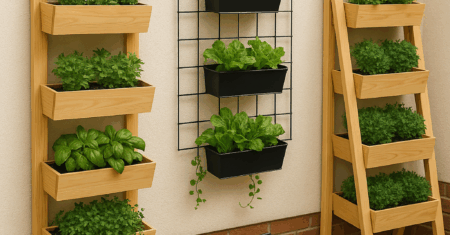
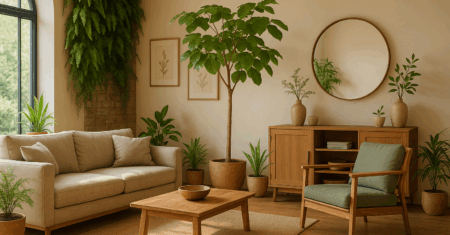
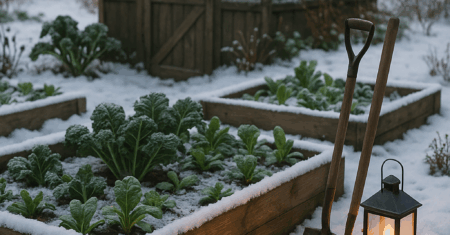
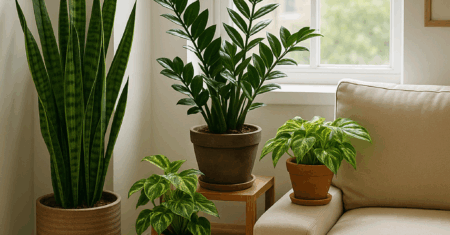
0 Comments